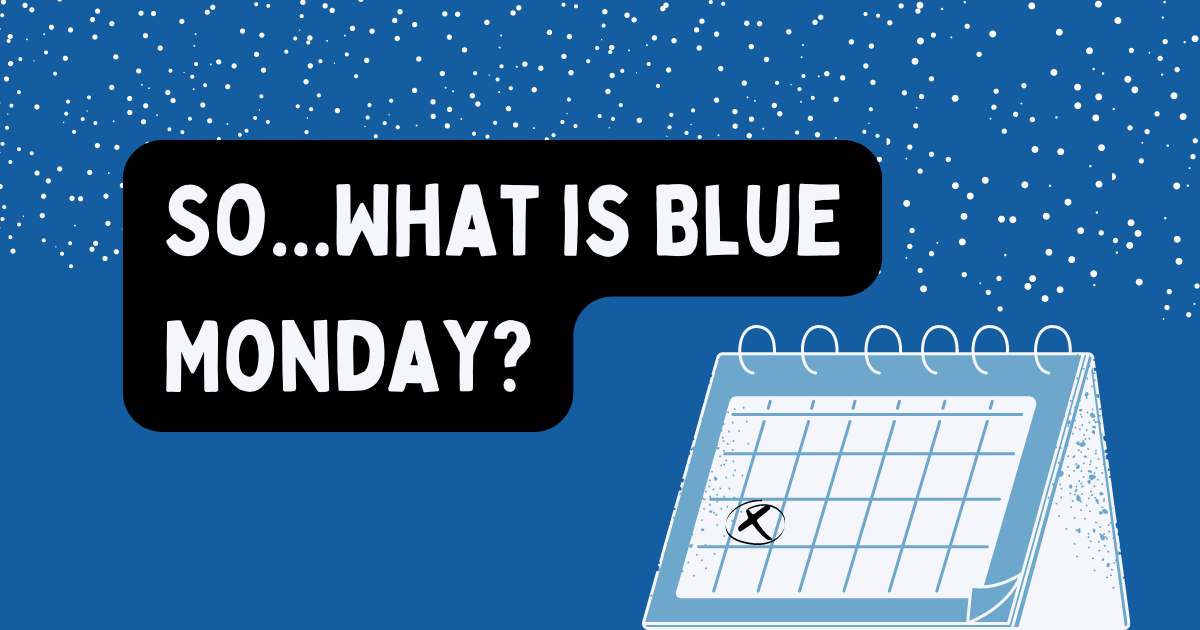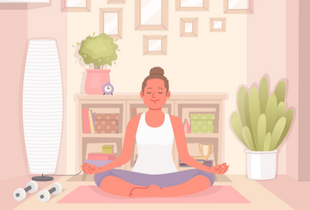What is Blue Monday?
 Written by: Emily Passfield, 4th year Psychology
Written by: Emily Passfield, 4th year Psychology
Blue Monday takes place on the third Monday in January, which falls on January 17 for 2022. It is said to be the saddest day of the year because of a combination of bad weather, long nights, as well as post-holiday slump and bills. It was initially created in 2005 as a PR campaign to convince workers to take more holidays in hopes of preserving their mental health, but the term has become loose over the past years. Following the holiday season, a lot of people feel as though they are less motivated, and often believe they are not sustaining their New Year’s resolutions.
However, Blue Monday has come under fire by medical and mental health professionals, since depression is not a condition that appears for only 24 hours. It is incredibly difficult to estimate the exact number of people who suffer from depression every year, especially over the course of the past couple of years; a national survey found that 94% of Canadian’s felt that their mental health was negatively impacted by the pandemic. I think that this upcoming Blue Monday will be especially significant for this reason, and that it will gain a lot more traction as a movement overall.
The formula used to calculate the “bluest” day of the year has been repeatedly mocked by scientists because there is no real way to measure it. In research, formulas are very specific and measurable, but the methods used in determining the science behind Blue Monday isn’t up to par. Marketers thought that they were able to determine the exact day when people’s motivations began to wane and debts began to rise, but there is no real way to tell. It also ties into the idea of “Monday blues,” where people may find it difficult to motivate themselves to stay focused on their priorities during the week. It turns out that the formula was a PR stunt by Sky Travel to increase sales. Similar to Hump Day on Wednesday when we often get excited for the upcoming weekend, Monday’s provide the opposite effect, since we all have a week of commitments.
Despite the science behind Blue Monday being questionable, there are still ways to improve your mood if you find it’s lower as January progresses. Psychologists have proven that mindset determines mood and perception of gloomy situations, so Blue Monday and Monday blues can be avoided. For example, when it is a sunny day, go outside and enjoy the sunshine; go to the gym to release some healthy endorphins, watch a movie and cuddle up with your pet. Regardless of what form of self-care you do, your mindset controls your outlook, so Blue Monday can easily turn into a yellow Monday.
Exercise is one of the best ways to release endorphins, and even 20 minutes can help wake you up and feel better. When I know a particularly hard time of year is coming up, I always establish a strict and consistent routine so that I have something to fall back on during stressful times. Meditation is also a great way to help center yourself and unplug in stressful moments, and taking a couple of minutes for yourself often helps far more than you can imagine.
Blue Monday takes place right after the start of second semester, which can naturally be quite a stressful time for some people. It’s important to take time for yourself by taking breaks from your studies and commitments and taking the time to simply breathe.
Check out more blogs:

Meditation - A Life Essential
Shubh shares how meditation can help to reduce the stresses of student life. Read the full article now!

The COVID Funk: Tips on Staying Healthy
Online learning got you in a funk? Check out these tips to stay well and healthy. Read the full article now!

Sleep Now, Work Later
No matter how important you feel school is, sleep is also crucial to your well-being. Read the letter now!
Published on

